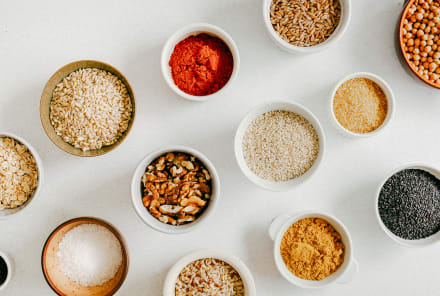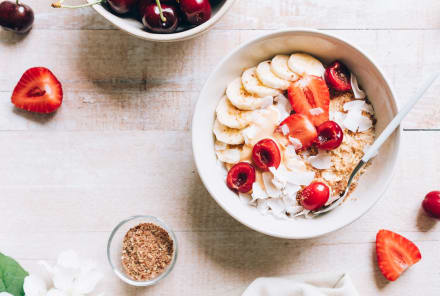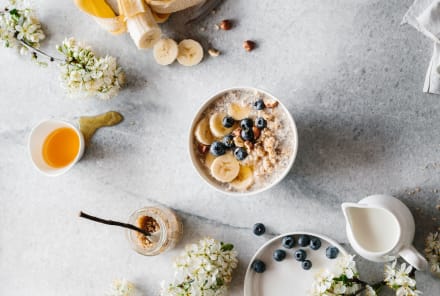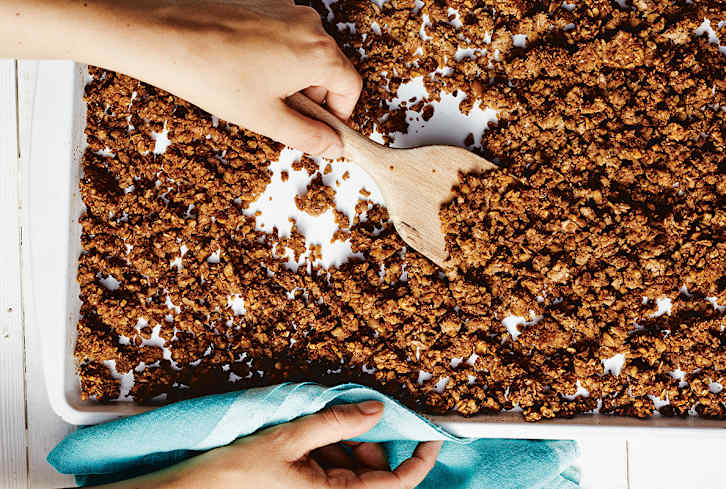Advertisement
Does Chocolate Really Contain Caffeine? Amount & Effects From Dark, Milk & White Chocolate


High-quality chocolate, like dark chocolate, has been shown to have a number of health benefits. Not only is it high in antioxidants1 and low in excess sugars (compared to other types of chocolate), but it has even been linked to improved heart health2. But does it actually contain caffeine, and if so, what are the potential effects?
Is there caffeine in chocolate?
Chocolate does contain trace amounts of caffeine, but it varies depending on the type of chocolate. "In the production process of turning cocoa beans into chocolate, two substances are formed," registered dietitian Titilayo Ayanwola, MPH, R.D., L.D., explains. Those substances are cocoa butter and cocoa solids.
"Because caffeine is found in the cocoa solids, the more cocoa the chocolate contains, the more caffeine will be present," registered dietitian Jenna Gorham, R.D., L.D., explains. In other words, the darker the chocolate, the higher the caffeine.
"White chocolate, however, is only comprised of cocoa butter," Ayanwola says. "Since it does not contain cocoa solids, it does not contain any caffeine."
How much caffeine is there in chocolate?
These are the caffeine contents of various types of chocolate, according to the U.S. Department of Agriculture (USDA) Food Data3. Each one represents a standard serving size (1 ounce) of chocolate.
- Dark chocolate (70 to 85% cacao solids): 22.7 milligrams
- Dark chocolate (45 to 59% cacao solids): 12.2 milligrams
- Semisweet chocolate, candies: 17.6 milligrams
- Milk chocolate bar: 5.6 milligrams
- White chocolate: 0 milligrams
What kind of effects can caffeine in chocolate have?
Whether or not the caffeine in chocolate will affect energy levels or sleep depends on the person consuming it. "Regular coffee drinkers likely won't notice a boost in energy or alertness from chocolate," says Gorham, "but if you are sensitive to caffeine, you may."
The reason chocolate likely won't affect coffee drinkers is that a standard cup of coffee contains 96 milligrams of caffeine4, which is four times more than a serving of dark chocolate, registered dietitian nutritionist Molly Knudsen, M.S., RDN, says. Since milk chocolate contains even less caffeine, it's very unlikely that it will affect energy or alertness, even in non-coffee drinkers.
It's also fine to enjoy dark chocolate and coffee on the same day, since 400 milligrams of caffeine is considered to be a safe daily intake for adults5, according to Ayanwola. If caffeine causes anxious or jittery feelings, spacing out your consumption (or microdosing) may be helpful.
Even though the caffeine content in chocolate is relatively low, Knudsen recommends getting a chocolate fix in during the day rather than at night. "In the afternoon, a small piece of dark chocolate may be just what you need to realign your focus and attention for the rest of the day," she says. Eating it closer to bedtime, on the other hand, may disrupt sleep quality.
While milk and white chocolate contain less caffeine than dark, it doesn't make them healthier options, Knudsen says—even for those trying to cut back on caffeine. Both white and milk chocolate tend to be higher in added sugars and unhealthy fats, she explains. They also lack the antioxidants and heart-health benefits of dark chocolate.
These various types of chocolates and caffeine levels will affect everyone differently. When it comes time to indulge, Ayanwola recommends listening to your body.
Bottom line.
There are trace amounts of caffeine in chocolate, particularly in dark chocolate. About one or two squares of dark chocolate ought to satisfy that sweet tooth, without significantly increasing caffeine consumption.

Why Nutrition Is Key To Changing Your Relationship With Alcohol
Brooke Scheller, DCN, CNS

Why Alcohol Sabotages Your Gut Health & How To Get Back On Track
Brooke Scheller, DCN, CNS

Why Nutrition Is Key To Changing Your Relationship With Alcohol
Brooke Scheller, DCN, CNS

Why Alcohol Sabotages Your Gut Health & How To Get Back On Track
Brooke Scheller, DCN, CNS

Why Nutrition Is Key To Changing Your Relationship With Alcohol
Brooke Scheller, DCN, CNS

Why Alcohol Sabotages Your Gut Health & How To Get Back On Track
Brooke Scheller, DCN, CNS

Why Nutrition Is Key To Changing Your Relationship With Alcohol
Brooke Scheller, DCN, CNS

Why Alcohol Sabotages Your Gut Health & How To Get Back On Track
Brooke Scheller, DCN, CNS














